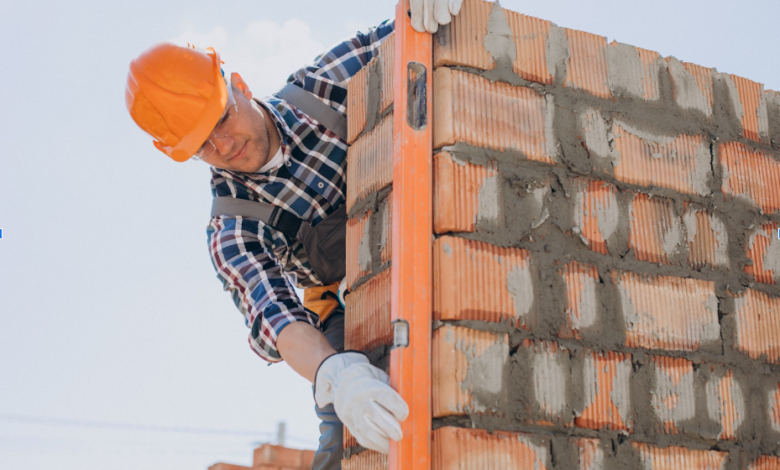Tilt Up Wall Construction: The Future of Cost-Effective and Durable Building Design

Modern construction methods have evolved dramatically over the past few decades, with an increasing focus on speed, efficiency, and cost-effectiveness. Among these innovations, tilt up wall construction has gained prominence as one of the most practical and versatile techniques for large-scale building projects. From warehouses and schools to office complexes and retail centers, tilt up construction is transforming the way buildings are designed and built.
This article explores the fundamentals of tilt up wall construction, its advantages, applications, and the step-by-step process that makes it a preferred method in the construction industry today.
What Is Tilt Up Wall Construction?
Tilt up wall construction, often referred to simply as tilt-up, is a building method where large concrete panels are cast on-site, typically on the building’s floor slab, and then tilted vertically into position using cranes. Once lifted into place, these panels form the exterior walls of the structure.
Unlike traditional masonry, where walls are built brick by brick, or precast systems where panels are manufactured off-site and transported, tilt up wall construction combines the benefits of on-site casting with the efficiency of prefabrication. This hybrid approach allows for faster completion times and reduced costs without compromising strength or durability.
The Growing Popularity of Tilt Up Wall Construction
Tilt up construction has been around for decades, but its popularity has surged in recent years for several reasons:
- The method allows for rapid construction, significantly reducing project timelines.
- Large concrete panels provide durability and low maintenance.
- On-site casting eliminates many transportation challenges associated with precast panels.
- It offers design flexibility, with panels that can be textured, colored, or patterned for aesthetic appeal.
As demand grows for cost-effective yet robust buildings, tilt up wall construction continues to be adopted in diverse industries.
Applications of Tilt Up Construction
Tilt up wall construction is widely used across commercial, industrial, and even institutional projects. Common applications include:
- Warehouses and Distribution Centers: Large, open spaces with high walls are ideally suited to tilt up panels.
- Retail Buildings: Shopping centers and standalone stores benefit from the speed of tilt up methods.
- Schools and Universities: Educational facilities use tilt up for both durability and aesthetic versatility.
- Office Complexes: Modern office parks often feature tilt up walls with decorative finishes.
- Industrial Facilities: Factories and plants require strong, fire-resistant structures that tilt up construction provides.
Its adaptability makes it a reliable choice for projects where both function and form are priorities.
The Process of Tilt Up Wall Construction
Tilt up wall construction follows a systematic process that combines engineering precision with on-site efficiency. Below is an overview of the major steps.
1. Planning and Design
Every tilt up project begins with careful planning. Engineers and architects design the building, accounting for panel dimensions, load requirements, and structural connections. Considerations include reinforcement placement, openings for doors and windows, and finishes.
2. Site Preparation and Slab Construction
The site is cleared and leveled, followed by the pouring of the floor slab. This slab often doubles as the casting surface for the wall panels, so it must be strong, level, and properly finished.
3. Formwork and Reinforcement
Forms are built directly on the slab to outline the shape of each wall panel. Within these forms, steel reinforcement (rebar) is placed to provide structural strength. Openings for doors, windows, or utilities are also incorporated at this stage.
4. Pouring Concrete Panels
Concrete is poured into the forms and carefully leveled. Once poured, the concrete is left to cure, gaining the strength needed for lifting. The curing period is crucial, as panels must be strong enough to withstand the stresses of lifting and placement.
5. Lifting and Placement
After curing, cranes lift the panels from a horizontal position to a vertical one. The panels are then tilted into their designated positions along the building’s perimeter and temporarily braced for stability.
6. Permanent Connections and Finishing
Once all panels are in place, permanent structural connections are made. Braces are removed, and final finishes such as painting, sealing, or decorative treatments are applied to the walls.
See also: Steps Toward a More Energized and Joyful Life
Advantages of Tilt Up Wall Construction
Tilt up construction offers numerous benefits, which explains its widespread use in today’s building industry.
Speed of Construction
Because panels are cast on-site and lifted into place quickly, tilt up projects often take significantly less time than traditional construction methods. Large buildings can be completed in a matter of weeks.
Cost Efficiency
Tilt up construction reduces labor costs and minimizes transportation expenses compared to precast panels. Casting on-site also allows for efficient material use.
Durability
Concrete panels are strong, long-lasting, and resistant to fire, wind, and pests. With proper maintenance, they can last for decades.
Design Flexibility
Modern tilt up panels can be customized with architectural finishes, including:
- Textured surfaces
- Decorative coatings
- Embedded patterns
- Integrated insulation
This flexibility ensures that tilt up buildings are not only functional but also visually appealing.
Sustainability
Tilt up construction often uses locally sourced materials and reduces waste, making it an environmentally friendly option. Energy-efficient insulation systems can also be incorporated into the panels.
Challenges in Tilt Up Wall Construction
While tilt up construction offers many advantages, it also comes with challenges that must be addressed.
- Large Equipment Needs: Cranes and heavy machinery are essential for lifting panels, which can increase costs on smaller sites.
- Weather Sensitivity: Because panels are cast outdoors, poor weather can delay curing and construction schedules.
- Design Limitations: Very complex building shapes may be less suited to tilt up methods.
- Space Requirements: Adequate on-site space is needed to cast and lift the panels, which may not be available in dense urban areas.
Despite these challenges, experienced contractors can typically overcome them with proper planning and execution.
Safety Considerations
Safety is paramount in tilt up wall construction. Because panels can weigh tens of thousands of pounds, lifting and placement must be carefully managed. Contractors follow strict safety protocols, including:
- Rigorous equipment inspections
- Trained crane operators
- Secure bracing systems during placement
- Comprehensive site supervision
By adhering to safety standards, tilt up construction remains one of the safest methods in modern building.
Comparing Tilt Up to Other Construction Methods
When evaluating tilt up against other common methods, several distinctions stand out:
- Versus Masonry: Tilt up is faster and often more cost-effective than traditional brick or block construction, especially for large buildings.
- Versus Precast Concrete: Precast panels require off-site manufacturing and transportation, while tilt up eliminates those logistics by casting panels on-site.
- Versus Steel Structures: While steel offers flexibility for high-rise buildings, tilt up provides superior fire resistance and thermal performance for low to mid-rise projects.
The Future of Tilt Up Construction
As construction technology advances, tilt up wall construction is evolving as well. Emerging innovations include:
- 3D Modeling and BIM (Building Information Modeling): Enhances design accuracy and coordination.
- High-Performance Concrete Mixes: Improve strength, durability, and environmental performance.
- Hybrid Systems: Combining tilt up with steel or wood framing for added versatility.
- Energy-Efficient Designs: Incorporating insulation layers directly into panels for improved thermal performance.
These developments ensure that tilt up construction will remain relevant and competitive in the decades to come.
Conclusion
Tilt up wall construction has redefined how modern buildings are designed and built. By casting panels on-site and lifting them into place, this method delivers speed, efficiency, and durability unmatched by many traditional construction approaches. Its wide range of applications, from warehouses to schools, demonstrates its versatility, while advances in design and sustainability continue to expand its appeal.
For developers and contractors, tilt up construction offers a reliable way to deliver high-quality buildings on time and within budget. For communities, it provides strong, safe, and visually appealing structures that stand the test of time.
As the construction industry continues to embrace innovation, tilt up wall construction will remain a cornerstone of efficient, durable, and sustainable building practices.




